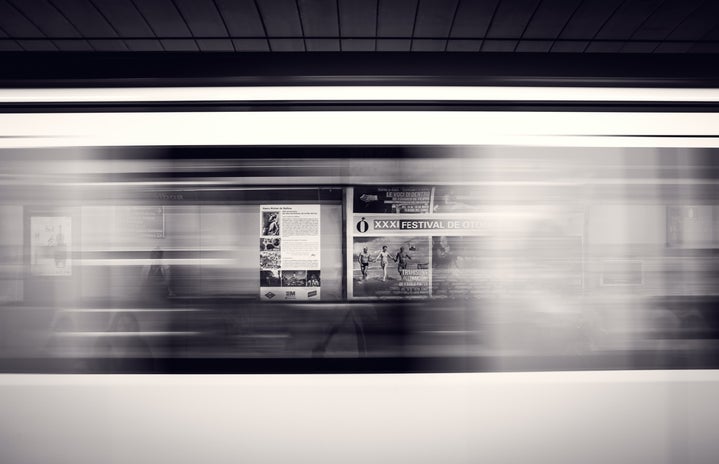From an active fight for rights and gender equality to a similar way of celebrating Mother’s Day, a contemporary International Women’s Day (IWD) celebration comes in many shapes and forms. For some, it commemorates women’s achievements both political and social, for others it is just a wonderful day of womanhood, love, flowers, and gifts. I personally love it not because it is a chance of being spoiled with another Milka Alpine choco bar but also for warm and fadeless memories of freshly plucked spring flowers, touching postcards and above all the feeling of importance. It is the importance of women’s rights, equality, safety, and justice, ability to speak out bravely and fearlessly as in movements like #MeToo or #TimesUp aiming to overcome stigma and ensure that people’s stories are heard and believed. These all factors altogether make the day a worldwide celebration, unite women activists in bold decisions and keep driving their inspiration as well as confidence.
Thus, in this article, I would like to invite you to take a short trip back in time to learn briefly about IWD roots and its uneasy, yet brave and unquenchable history.
How did it originate?
It all started on February 28 in 1908 with 15,000 textile women workers who marched through New York City demanding suffrage, better pay and shorter working hours. The same day next year was designated as a national Women’s Day by the Socialist Party of America.
Clara Zetkin (above) and Luise Zietz (below)
Drawing inspiration from the American holiday, German socialists Clara Zetkin and Luise Zietz suggested that every country should celebrate on one day every year to push for their actions. Interestingly, Clara Zetkin was an opponent of feminism, however, she was trying to call attention to the difficult conditions of women workers. The proposal was agreed at a Conference in Copenhagen consisting of 100 women from 17 different countries, representing unions, socialist parties, working women’s clubs among which were the first three women elected to the Finnish parliament. Already on March 19 in 1911, the first celebration of Women’s day took place in Germany, Austria, Denmark and Switzerland in the form of rallies gathering more than 1 million of women and men aiming to end gender discrimination, secure women’s rights to work, be trained and hold public office. Women’s protest for “Bread and Peace”, March 8, 1917, Petrograd, Russia
The further push for the Women’s Day to be signalized was the beginning of World War I, expressed through numerous campaigns for peace on or around March 8. Following that, in 1917 women in Russia commenced a massive revolutionary protest and strike for “Bread and Peace” in response to the deaths of Russian Soldiers in World War I and poor living conditions. The protest was held on March 8 (February 23 according to Julian calendar used at that time in Russia). Four days later, the Czar abdicated and the provisional Government granted women the right to vote. Women’s demands for equality sparked one of the most significant events in modern European history.
Eleonor Roosevelt, the First Lady of The United States from March 1933 to April 1945
Furthermore, the day was used for anti-fascist actions to resist Adolf Hitler and, as Eleonor Roosevelt wrote in her “My Day” column on January 12, 1944, “We are glad to know that women of many nationalities are meeting together to celebrate an international day to help speed victory and to help in reconstructing a world in which peace may be achieved.”
However, for much of the 20th century, the holiday was celebrated by Soviet and communist nations only and being abandoned by anti-communist ones. For example, the holiday was adopted by communists in China in 1922 and by Spanish communists in 1936. In 1965, the USSR declared the holiday a non-working day to “commemorate the outstanding merits of Soviet women.” It wasn’t until 1975 that the United Nations (U.N.) officially recognized and began celebrating IWD on March 8. Since then, the U.N. and countries around the world have celebrated the occasion as a way to honor women and fight for their rights with official themes changing every year.
The theme set for the year 2018 by U.N. is “Time is Now: Rural and Urban activists transforming women’s lives” with a strong call to #PressForProgress promoted by IWD website. As we can feel the fight is not over and so many things and problems need to be done and solved. Let’s all express the act of solidarity for women suffering from extreme poverty and violence in both rural and urban areas, and let’s help young men and boys learn to value and respect women and girls and change the way they behave.
I encourage you all not to stay aside but contribute, do what you can to truly make a positive difference!
Happy International Women’s Day Ladies!
Pictures taken from Wikimedia
Resources:
https://www.internationalwomensday.com/Theme
https://en.wikipedia.org/wiki/International_Women%27s_Day
https://iwd.uchicago.edu/page/international-womens-day-history
https://www2.gwu.edu/~erpapers/myday/displaydoc.cfm?_y=1944&_f=md056690
http://www.un.org/en/events/womensday/history.shtml



